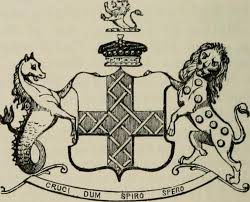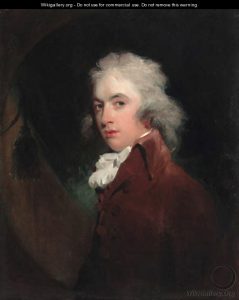What Is A Viscount? Unveiling This Unique Noble Title In The Peerage System
When we think of nobility, grand titles like Duke or Earl often come to mind. But nestled within the intricate tapestry of aristocratic ranks is another significant, yet perhaps less universally understood, title: the Viscount. While it might not be as flashy as a duke or as straightforward as a baron, the viscount has a rich history and a unique place in the world of nobility. Let’s break it down—what exactly is a viscount, and why does this title hold such a distinctive position?
Defining the Viscount: Etymology and Pronunciation
A viscount (/ˈvaɪkaʊnt/) is a noble title used in certain European countries for a man of high social rank. For women, or the wives of viscounts, the equivalent title is viscountess (/ˈvaɪkaʊntɪs/).
The term "viscount" itself offers a clue to its historical function. It originates from the Old French "vicomte," which in turn comes from the Latin "vicecomes." This Latin root literally means "vice-count" or "deputy count." This etymology hints at the viscount's traditional role, often serving as a deputy or assistant to a count (or earl in the British system).
The Peerage Hierarchy: Where Does a Viscount Fit?
To truly understand what a viscount is, it's essential to place them within the broader context of the peerage system. The peerage refers to the body of peers, comprising hereditary titles in various European countries, most notably in the United Kingdom.
In the British peerage hierarchy, the viscount holds a distinct and important position. It is the fourth most significant rank, nestled comfortably between other well-known titles. Here's a quick primer on the typical order of precedence in the British peerage, from highest to lowest:
- Duke/Duchess
- Marquess/Marchioness
- Earl/Countess
- Viscount/Viscountess
- Baron/Baroness
As you can see, a viscount ranks directly below an Earl (or Count in other European systems) and directly above a Baron. This positioning highlights its elevated status, placing it firmly within the upper echelons of the nobility.
A Glimpse into History: The Origin of the Viscountcy
The title of viscount, as we know it in the British peerage, has a fascinating history. It was first formally recorded in 1440 during the reign of King Henry VI of England and France. Henry VI played a pivotal role in consolidating titles from both his kingdoms. It was in this period that John, Lord Beaumont, was elevated, marking a significant moment for the viscountcy as a distinct peerage rank in England.
While the formal creation in England dates to the 15th century, the concept of a "vice-count" or a local administrator existed much earlier in continental Europe, reflecting its Latin origins. These early "vicecomes" were often royal officials or local governors, acting on behalf of a count or the monarch in a specific territory. This historical lineage underscores the title's functional roots before it became a purely honorific rank.
Traditional Roles and Responsibilities of a Viscount
Traditionally, viscounts were not merely holders of a prestigious title; they often held significant responsibilities. As their etymology suggests, they frequently served as deputies to Earls, assisting them in administering their large estates and territories. In other instances, viscounts functioned as local administrators, overseeing specific regions, maintaining order, and collecting taxes on behalf of the Crown or a higher-ranking noble.
While the direct administrative duties have largely faded with the evolution of modern governance, the historical context of their roles underscores the practical importance this title once held. They were often the king's eyes and hands in distant parts of the realm, ensuring that royal authority was maintained.
The Viscountess: A Title of Her Own
It's important to reiterate the female equivalent: a viscountess. This title is used for a woman who holds the rank in her own right (though this is less common for hereditary peerages) or, more frequently, as the wife of a viscount. Just as a duke has a duchess, and an earl has a countess, a viscount has a viscountess, sharing in the prestige and social standing of the title.
The Oldest and the Numbers Today
Among the many viscountcies that have been created over the centuries, one stands out as the oldest existing title: that of Viscount Hereford. This esteemed title was created in 1550, making it a living testament to the enduring nature of the British peerage system and a direct link to centuries of noble history.
Today, while the active political power of hereditary peers has diminished, the titles themselves continue to exist as symbols of heritage and tradition. Recent statistics reveal the existence of approximately 270 Viscountcies across the United Kingdom. This number reflects centuries of creations, some of which have become extinct, while others have been passed down through generations, maintaining a unique part of Britain's aristocratic legacy.
Conclusion: The Enduring Significance of the Viscount
In conclusion, the viscount is a noble title with a rich tapestry of history and a unique position within the European, particularly British, peerage system. Ranking as the fourth most significant title—below an Earl and above a Baron—the viscountcy emerged formally in England in 1440, though its roots as a "vice-count" stretch back further into continental Europe.
Historically, viscounts played practical roles as deputies and administrators, embodying a blend of social prestige and governmental function. While their direct administrative duties have evolved, the title of viscount, and its female counterpart, viscountess, continues to signify a distinguished lineage and a unique part of aristocratic heritage. It might not always grab the headlines like a duke, but the viscount holds a quiet dignity and a deep historical significance that is well worth understanding.

A Viscount, History of Viscounts, British Peerage System, Duke

A Viscount, History of Viscounts, British Peerage System, Duke

British nobility | Ranks, Titles, & Peerage System | Britannica